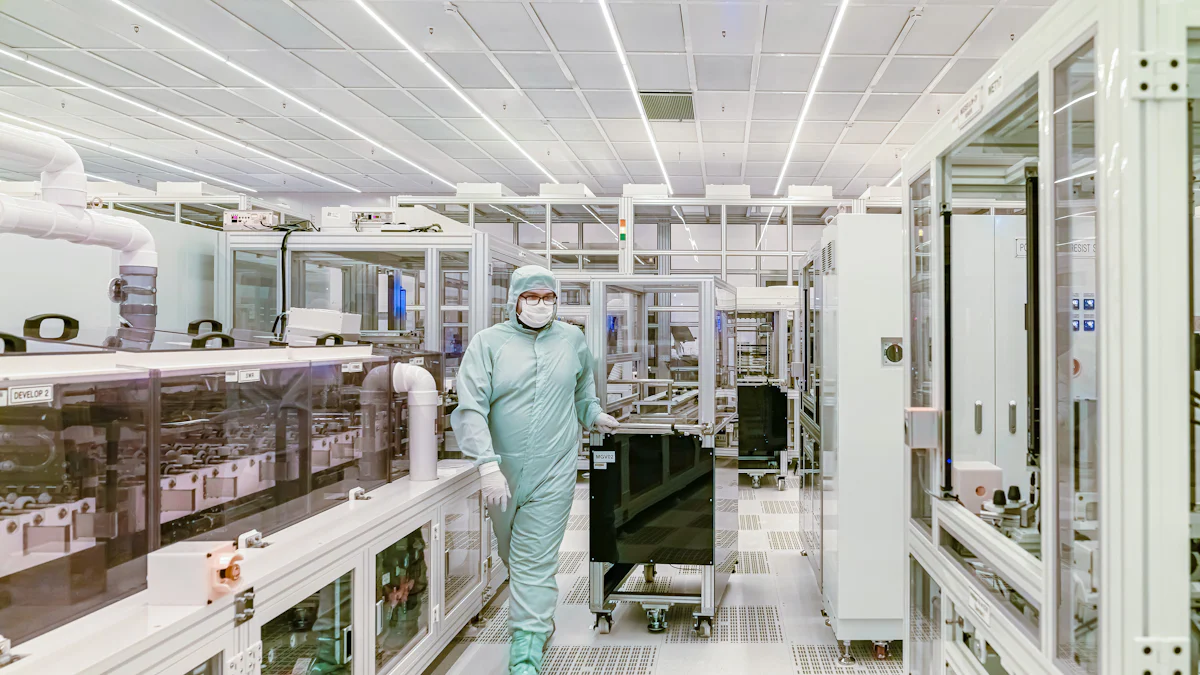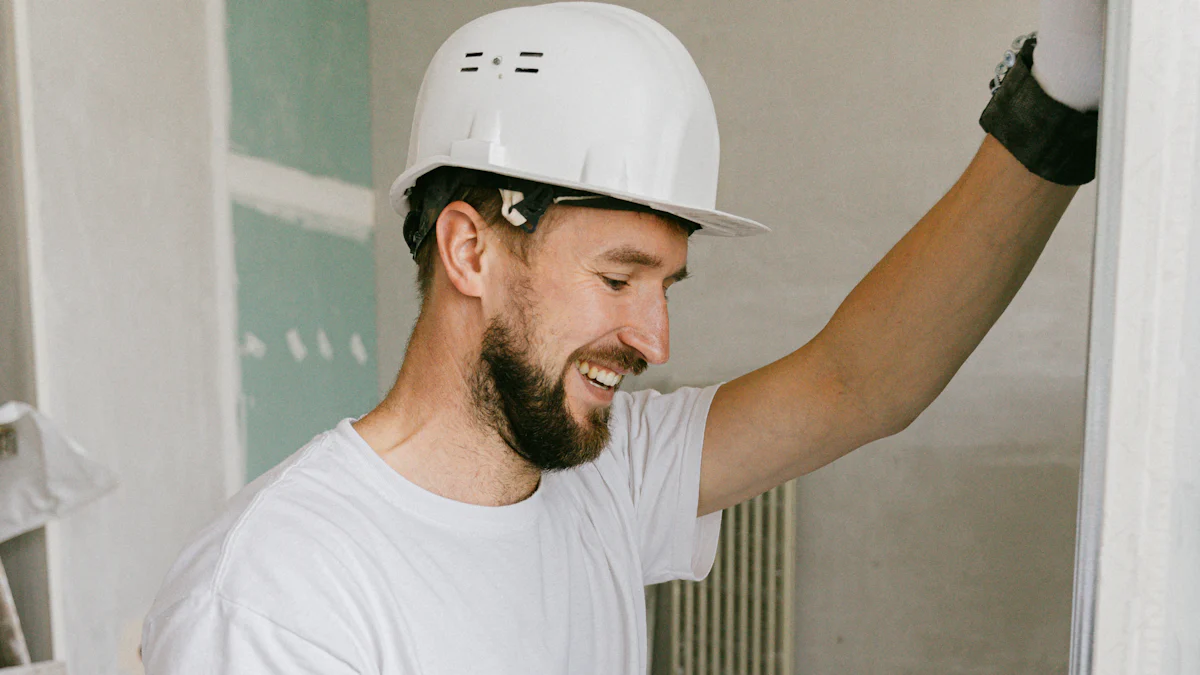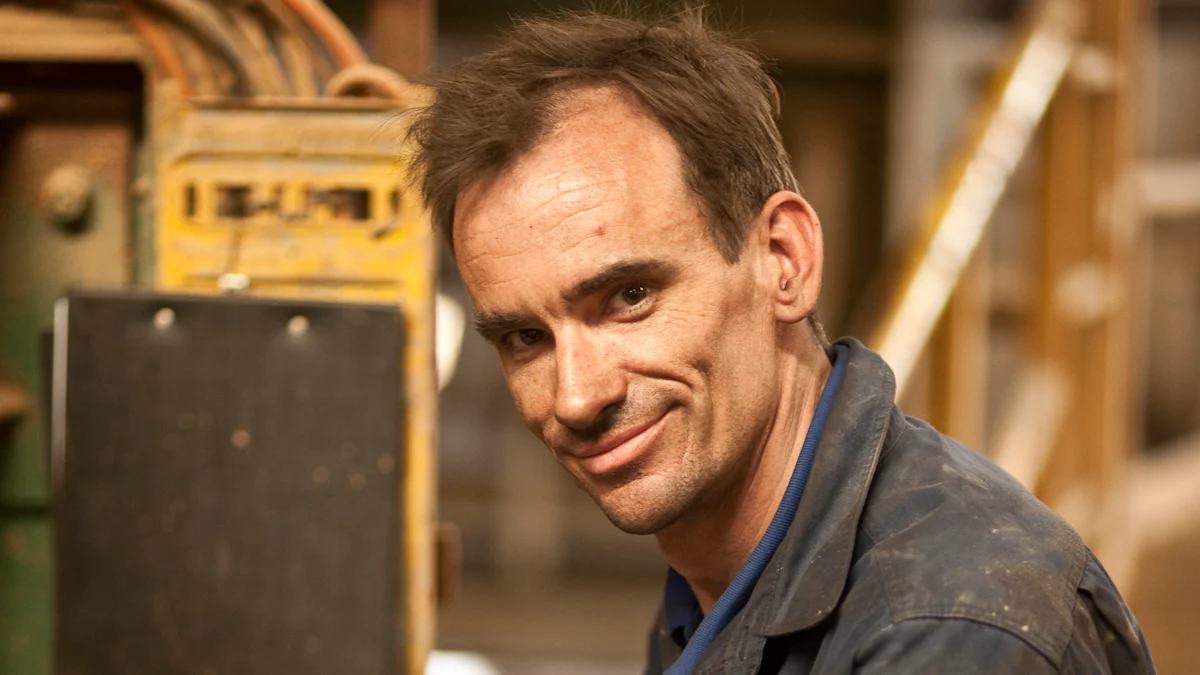
Sintering in Metal Injection Molding (MIM) plays a pivotal role in transforming metal powders into solid, high-performance components. This process involves heating the molded parts to just below their melting point, allowing the metal particles to bond and form a dense structure. The significance of sintering lies in its ability to enhance the mechanical properties and dimensional accuracy of MIM parts. In North America, industries like automotive and aerospace have embraced this technology, leveraging its potential to produce complex and precise components efficiently. The integration of smart technologies further boosts the effectiveness of sintering in MIM.
Key Takeaways
- Sintering is essential in Metal Injection Molding, transforming metal powders into solid components by bonding particles through heat, enhancing strength and durability.
- Proper pre-sintering preparation, including debinding, is crucial to avoid defects and ensure high-quality final products.
- The sintering phase significantly improves the mechanical properties and dimensional accuracy of MIM parts, making them suitable for demanding applications.
- Sintering enhances the efficiency of the MIM process by reducing porosity and minimizing the need for additional machining, leading to cost savings.
- Understanding the dynamics of heat and pressure during sintering allows for better control and optimization of the process, ensuring consistent quality.
- Sintering enables the production of complex geometries and precise components, expanding the design possibilities in various industries.
- Future advancements in sintering technology promise to further enhance precision and efficiency, pushing the boundaries of what MIM can achieve.
Understanding the Sintering Process

In the realm of Metal Injection Molding (MIM), sintering stands as a crucial phase that transforms metal powders into robust components. Let’s delve into the intricacies of this process.
The Science Behind Sintering
Heat and Pressure Dynamics
I find that heat and pressure play pivotal roles in the sintering process. When we apply heat, it elevates the temperature of the metal particles to just below their melting point. This causes the particles to bond together, forming a dense structure. Pressure, although not always applied externally, influences the particle arrangement and enhances the bonding process. The dynamics of heat and pressure ensure that the metal particles fuse effectively, reducing porosity and increasing the density of the final product.
Material Behavior During Sintering
During sintering, materials undergo significant changes. I observe that the metal particles begin to coalesce, reducing the volume and eliminating voids. This results in a denser and more compact structure. The grain growth during this phase enhances the mechanical properties of the material, making it stronger and more durable. The behavior of materials during sintering is critical in determining the final properties of the MIM parts.
Steps in the Sintering Process
Pre-sintering Preparation
Before sintering, we must prepare the parts meticulously. This involves debinding, where we remove the binder material used in the molding process. Proper preparation ensures that the parts are ready for the high temperatures of the sintering phase. Any residual binder can lead to defects, so thorough preparation is essential.
Sintering Phase
The sintering phase is where the magic happens. We place the prepared parts in a furnace and heat them to a temperature just below their melting point. This allows the metal particles to bond, forming a solid structure. The sintering phase is crucial for achieving the desired mechanical properties and dimensional accuracy of the parts.
Post-sintering Treatments
After sintering, we often perform additional treatments to enhance the properties of the parts. These treatments can include heat treatment, surface finishing, or machining. Post-sintering treatments ensure that the parts meet the specific requirements of their intended applications.
Scientific Research Findings: According to a study published in Materials, the sintering process is a key factor in metal injection molding, determining the accuracy and performance of materials. It involves particle fusion, volume reduction, porosity reduction, and grain growth.
Sintering in Metal Injection Molding is a complex yet fascinating process that significantly impacts the quality and performance of the final products. By understanding the science and steps involved, we can optimize this process to produce high-quality components efficiently.
The Role of Sintering in Metal Injection Molding

Integration with MIM
How Sintering Complements MIM
In the realm of Metal Injection Molding (MIM), sintering serves as the final and crucial step that transforms the molded parts into fully dense metal components. I see sintering as the process that consolidates and densifies the debound parts by heating them to a temperature just below the melting point of the metal powder. This stage is essential because it imparts the desired mechanical and physical properties to the parts. Without sintering, the MIM process would leave us with porous ‘brown’ structures that lack the necessary strength and hardness. By fusing the metal particles, sintering ensures that the final parts achieve optimal strength and hardness, making them suitable for demanding applications.
Sintering’s Impact on MIM Efficiency
Sintering in Metal Injection Molding significantly enhances the efficiency of the MIM process. I find that this stage not only improves the mechanical properties of the parts but also ensures dimensional accuracy. The ability to produce complex and precise components efficiently is a hallmark of MIM, and sintering plays a pivotal role in achieving this. By reducing porosity and increasing density, sintering minimizes the need for additional machining or finishing processes, thereby streamlining production and reducing costs. This efficiency makes MIM an attractive option for industries like automotive and aerospace, where precision and performance are paramount.
Importance of Sintering in MIM
Achieving Desired Material Properties
The importance of sintering in Metal Injection Molding cannot be overstated when it comes to achieving the desired material properties. During this stage, the metal particles bond together, resulting in a solid structure with enhanced mechanical properties. I observe that sintering allows us to tailor the properties of the final parts by selecting the appropriate metal powder composition and controlling the sintering parameters. This flexibility is crucial for meeting the specific requirements of different applications, whether it’s high strength, corrosion resistance, or thermal stability.
Enhancing Part Complexity and Precision
Sintering in Metal Injection Molding also plays a vital role in enhancing the complexity and precision of the parts we produce. The ability to create intricate geometries with tight tolerances is one of the key advantages of MIM, and sintering is instrumental in achieving this. By ensuring uniform densification and minimal distortion, sintering allows us to produce parts with complex shapes and fine details that would be challenging or impossible to achieve with traditional manufacturing methods. This capability opens up new possibilities for design innovation and expands the range of applications for MIM technology.
Benefits and Challenges of Sintering in MIM
Benefits
Improved Material Properties
I find that sintering in Metal Injection Molding (MIM) significantly enhances the material properties of the final products. By heating the metal parts to just below their melting point, we bond the metal particles and close the gaps left during the debinding process. This fusion results in a denser and more compact structure, which improves the strength and structural integrity of the parts. The process also reduces porosity, leading to harder and stronger components. This improvement in material properties makes MIM parts suitable for demanding applications where durability and performance are critical.
Cost-effectiveness and Efficiency
Sintering in MIM offers a cost-effective and efficient solution for producing complex metal parts. The ability to achieve optimal strength and hardness without extensive post-processing reduces production costs. I observe that the precise control of the temperature profile during sintering minimizes the need for additional machining or finishing processes. This efficiency streamlines production, making MIM an attractive option for industries like automotive and aerospace. By reducing waste and optimizing resource use, sintering contributes to the overall cost-effectiveness of the MIM process.
Challenges
Potential Defects in Sintered Parts
Despite its benefits, sintering in MIM presents challenges that we must address to ensure high-quality parts. One of the primary concerns is the potential for defects in the sintered parts. Issues such as shrinkage, distortion, and residual porosity can affect the final product’s performance. These defects often arise from improper control of the sintering parameters or inadequate pre-sintering preparation. To mitigate these risks, I emphasize the importance of careful design and process control during the MIM design step. By understanding the factors that contribute to defects, we can develop strategies to minimize their occurrence.
Process Control and Optimization
Achieving consistent results in sintering requires precise process control and optimization. The sintering process involves heating fine metal powder to fuse the particles, which demands a specific temperature profile. I find that maintaining this profile is critical to achieving the desired properties and tolerances of the final parts. Any deviation can lead to variations in part quality, affecting their suitability for their intended applications. To optimize the process, we must continuously monitor and adjust the sintering parameters, ensuring that each batch meets the required standards. This level of control is essential for producing reliable and high-performance MIM components.
Sintering in Metal Injection Molding stands as a cornerstone in achieving high-performance metal components. I see its importance in how it bonds powder particles, eliminates pores, and imparts strength. The benefits include improved material properties and cost-effectiveness. However, challenges like potential defects and process control demand attention. Looking ahead, advancements in sintering technology promise enhanced precision and efficiency. By embracing these innovations, we can push the boundaries of what MIM can achieve, opening new possibilities for industries reliant on complex metal parts.
FAQ
What is the sintering process in Metal Injection Molding (MIM)?
The sintering process in Metal Injection Molding involves heating fine metal powder to fuse the particles. This fusion results in harder and stronger parts. Sintering serves as the final major step in producing MIM components, ensuring they achieve the desired mechanical properties.
What is the significance of sintering in MIM?
Sintering holds immense significance in MIM. It is the most critical step, determining the properties and tolerances of the final parts. Every step in the Metal Injection Molding process traces back to sintering, making it essential to understand for anyone involved in MIM.
What is the role of sintering in metal injection molding technology?
In MIM technology, sintering occurs when molded parts are placed in a high-temperature furnace. The parts heat near their melting point, removing all remaining binder. This process bonds the metal particles, causing the part to shrink and densify, forming its final strength and geometry.
What happens during the sintering stage in Metal Injection Molding (MIM)?
During the sintering stage, the debound part consolidates and densifies by heating it to a temperature below the metal powder’s melting point. This stage transforms the porous ‘brown’ structure into a solid, fully dense metal component, imparting the desired mechanical and physical properties.
How does sintering improve the properties of MIM parts?
Sintering enhances the properties of MIM parts by bonding metal particles and closing gaps left during debinding. This process results in a denser structure, improving strength and structural integrity. The reduction in porosity leads to harder and stronger components, suitable for demanding applications.
Why is precise control important during the sintering process?
Precise control during sintering is crucial to achieving consistent results. The process involves heating fine metal powder, requiring a specific temperature profile. Maintaining this profile ensures the desired properties and tolerances of the final parts, minimizing variations in quality.
Can sintering reduce production costs in MIM?
Yes, sintering can reduce production costs in MIM. By achieving optimal strength and hardness without extensive post-processing, it minimizes the need for additional machining or finishing processes. This efficiency streamlines production, making MIM a cost-effective option for industries like automotive and aerospace.
What challenges might arise during the sintering process?
Challenges during sintering include potential defects such as shrinkage, distortion, and residual porosity. These issues often stem from improper control of sintering parameters or inadequate pre-sintering preparation. Addressing these challenges requires careful design and process control.
How does sintering contribute to the complexity and precision of MIM parts?
Sintering contributes to the complexity and precision of MIM parts by ensuring uniform densification and minimal distortion. This capability allows for the production of parts with intricate geometries and tight tolerances, expanding the range of applications for MIM technology.
What advancements in sintering technology can we expect in the future?
Future advancements in sintering technology promise enhanced precision and efficiency. By embracing innovations, we can push the boundaries of what MIM can achieve, opening new possibilities for industries reliant on complex metal parts. These advancements will likely focus on improving process control and reducing defects.
